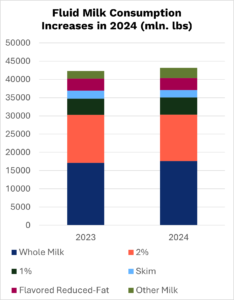Gregg Doud, president and CEO of the National Milk Producers Federation (NMPF), told the House Ways and Means Trade Subcommittee today that expanding market access and enforcing existing trade agreements to America’s dairy producers, workers and exporters is of paramount importance.
“To keep up with our competitors from Europe and New Zealand, U.S. dairy exporters need new trade deals that cut tariffs and tackle nontariff trade barriers,” Doud said in his written testimony. “Whether the U.S. government prioritizes the enforcement the trade agreements it has negotiated and addresses trade barriers targeting U.S. exports will determine whether American farmers and workers will actually benefit from the market access that has and will be promised.”
The U.S. dairy industry last year exported close to $8.3 billion in dairy products overseas, supporting thousands of jobs across the country, despite competing against global counterparts who benefit from more recent and expansive trade agreements. Doud highlighted the critical role of existing U.S. trade agreements and called on Congress and the Trump Administration to pursue and enforce trade policies that empower the U.S dairy industry to grow its business internationally.
Doud also detailed specific agreements for the U.S. government to prioritize greater enforcement, including:
- Fixing the United States’ deeply imbalanced agricultural trade relationship with the European Union.
- Ensuring Canada holds up its end of the bargain on dairy in USMCA by fixing both the export issues into Canada and the excessive offloading of artificially low-price Canadian dairy protein into the U.S. and global markets.
- Following through with China on increasing its purchases of U.S. dairy products, ensuring timely facility listing updates, and providing protection for common names.
- Resolving India’s longstanding high tariffs and unscientific certification requirements.
“Our competitors are not slowing down,” Doud said. “They are targeting highly valuable and important dairy markets, with the backing of their governments’ proactive trade agendas. We are hopeful that the U.S. government will take this as a challenge to stand up for U.S. dairy and U.S. agriculture. Our farmers deserve a level playing field and are counting on their government to deliver.”


 By Dr. Jamie Jonker, Chief Science Officer, National Milk Producers Federation
By Dr. Jamie Jonker, Chief Science Officer, National Milk Producers Federation By Paul Bleiberg, Executive Vice President, Government Relations, National Milk Producers Federation
By Paul Bleiberg, Executive Vice President, Government Relations, National Milk Producers Federation



